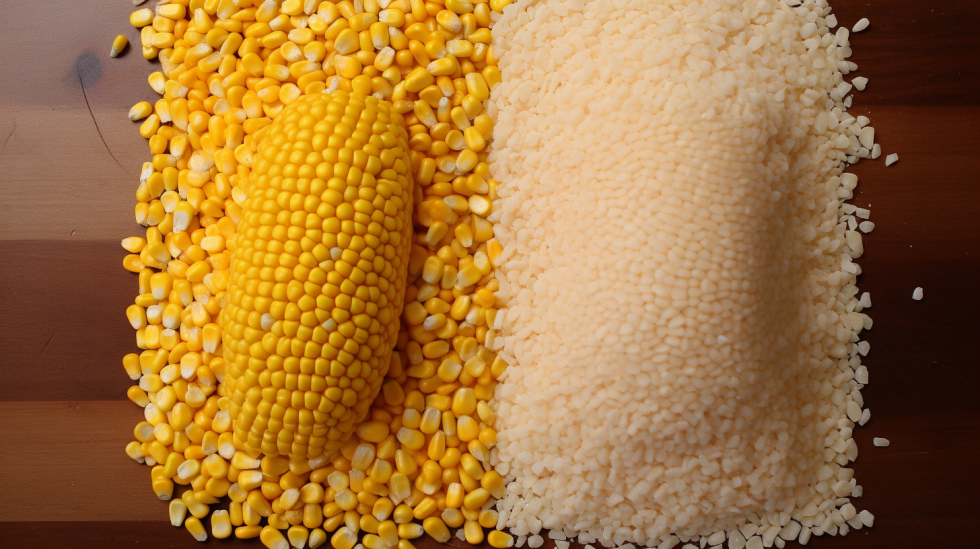Price elasticity is a fundamental concept in economics, measuring the responsiveness of consumer demand to changes in prices. In the South African market, maize meal holds a central place in the diet of millions. However, it’s essential to recognize that not all maize meal products are created equal in terms of price elasticity. In this comprehensive analysis, we delve into the intriguing assertion that the demand for Iwisa maize meal is more price elastic than the demand for all maize meal in South Africa. By exploring the factors that contribute to this phenomenon, we aim to gain a deeper understanding of consumer behavior, market dynamics, and the implications for both producers and consumers.

Understanding Price Elasticity
Before delving into the specifics of the Iwisa maize meal, it’s crucial to grasp the concept of price elasticity. Price elasticity of demand (PED) measures how sensitive the quantity demanded of a product is to changes in its price. A product is considered price elastic if a small change in price results in a proportionally larger change in quantity demanded, indicating that consumers are highly responsive to price fluctuations. Conversely, a product is price inelastic if changes in price have a relatively small impact on demand.
In South Africa, maize meal is a staple food product, and understanding its price elasticity is essential for both producers and policymakers. Price-elastic products may experience significant changes in demand as prices shift, while price-inelastic products remain relatively stable in demand despite price changes.
Factors Influencing Demand for Iwisa Maize Meal
To comprehend why the demand for Iwisa maize meal may be more price elastic than the demand for all maize meal in South Africa, it’s crucial to consider several factors:
- Brand Loyalty: Iwisa maize meal may have a loyal customer base that is more price-sensitive than those purchasing other maize meal brands. Brand loyalty can affect how consumers respond to price changes.
- Substitute Products: The availability of substitute products, such as other maize meal brands or alternative food sources, can influence price elasticity. If consumers have readily available substitutes, they may be more responsive to price changes.
- Income Levels: Income levels vary across South Africa, and consumers with lower incomes may exhibit higher price sensitivity. The income distribution of Iwisa maize meal consumers compared to consumers of all maize meal can impact price elasticity.
- Consumer Preferences: Consumer preferences for specific maize meal products, taste, texture, or packaging can affect price elasticity. If Iwisa maize meal is preferred for certain reasons, consumers may be more sensitive to its price.
Market Dynamics of Iwisa Maize Meal
Iwisa maize meal is a well-established brand in the South African market, known for its quality and affordability. Understanding the market dynamics of Iwisa maize meal can shed light on why its demand may be more price elastic:
- Competitive Pricing: Iwisa maize meal may engage in competitive pricing strategies, striving to offer attractive prices to consumers. This can make consumers more responsive to price changes.
- Marketing and Promotion: Effective marketing and promotion campaigns can influence consumer perception of value. If Iwisa maize meal employs persuasive marketing tactics, consumers may be more price-conscious.
- Market Share: The market share of Iwisa maize meal in the overall maize meal market can impact its price elasticity. A significant market share can result in more price-sensitive consumers.
- Consumer Demographics: The demographics of Iwisa maize meal consumers, including age, location, and income, can play a role in price elasticity. Different segments of the population may exhibit varying levels of sensitivity to price changes.
Policy Implications and Market Insights
Recognizing the price elasticity of Iwisa maize meal compared to all maize meal in South Africa has several important policy implications and provides valuable market insights:
- Pricing Strategies: Producers and retailers of Iwisa maize meal should consider their pricing strategies carefully, recognizing the price sensitivity of their target market. This understanding can inform pricing decisions and promotional campaigns.
- Consumer Welfare: Policymakers can use insights into price elasticity to develop policies that protect consumer welfare. For instance, if Iwisa maize meal is more price elastic, measures to stabilize its price may be necessary to prevent sudden spikes that could affect lower-income consumers.
- Market Competition: An awareness of price elasticity can influence competition within the maize meal market. Producers may adjust their strategies to gain market share or maintain competitive pricing.
- Consumer Behavior Studies: Further research into consumer behavior regarding maize meal can provide deeper insights into the price elasticity of specific brands and products. This research can help refine marketing and pricing strategies.
Conclusion
The assertion that the demand for Iwisa maize meal is more price elastic than the demand for all maize meal in South Africa highlights the complex nature of consumer behavior and market dynamics. Price elasticity is influenced by a myriad of factors, including brand loyalty, substitute products, income levels, and consumer preferences.
Understanding the price elasticity of specific maize meal brands, such as Iwisa, is essential for producers, policymakers, and marketers. It allows for more informed pricing decisions, effective marketing strategies, and policies that safeguard consumer welfare. Additionally, recognizing the price sensitivity of consumers can help maintain a competitive and stable maize meal market in South Africa.
Further research and ongoing analysis of consumer behavior and market dynamics will continue to provide valuable insights into the intricate relationship between price elasticity and the demand for Iwisa maize meal and other staple products in South Africa’s diverse and dynamic market.
